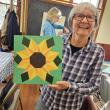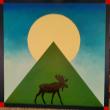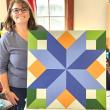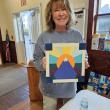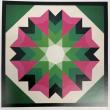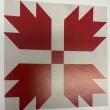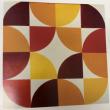Take a ride through time along the Maine Barn Quilt Trail
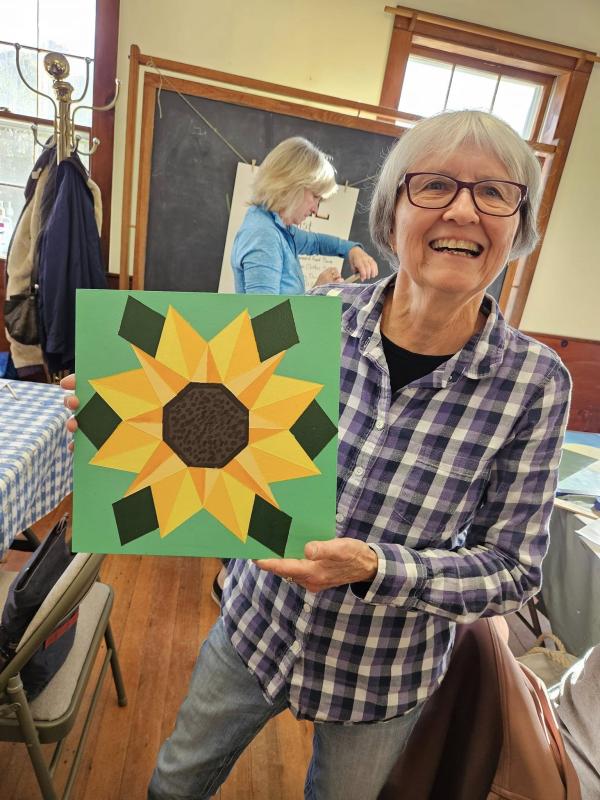 Rita Arnold and her sunflower. Courtesy of Saskia Reinholt Facebook page
Rita Arnold and her sunflower. Courtesy of Saskia Reinholt Facebook page
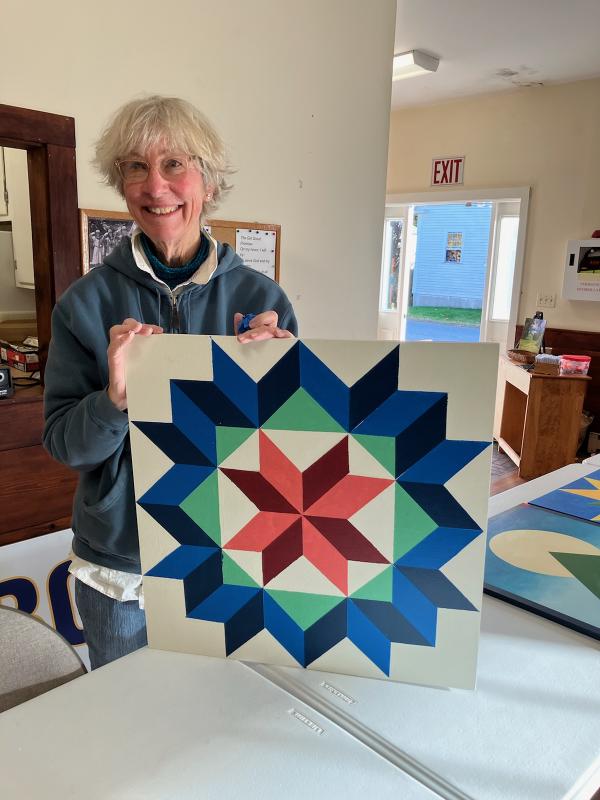 Southport artist Fran Scannell and her star square completed at the Oct. 26 quilt workshop with Saskia Reinholt. . Courtesy photo
Southport artist Fran Scannell and her star square completed at the Oct. 26 quilt workshop with Saskia Reinholt. . Courtesy photo
 Full Moon Moose quilt by Vicki Reinecke. Courtesy image
Full Moon Moose quilt by Vicki Reinecke. Courtesy image
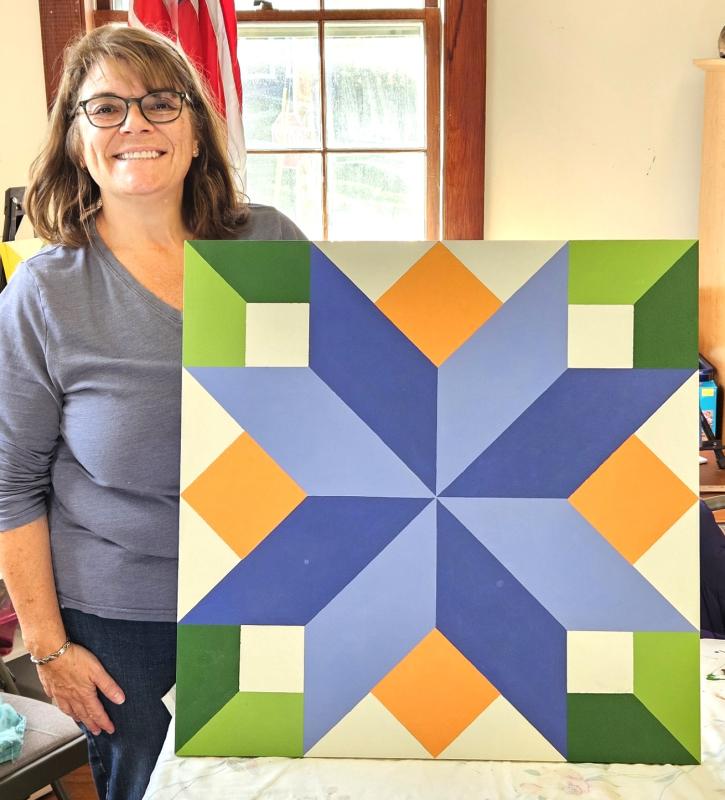 Courtesy of Saskia Reinholt
Courtesy of Saskia Reinholt
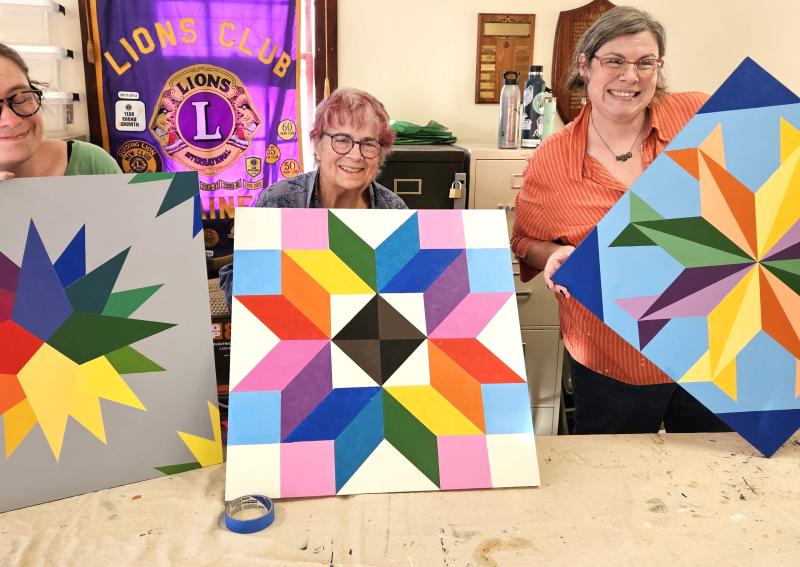 Courtesy of Saskia Reinholt
Courtesy of Saskia Reinholt
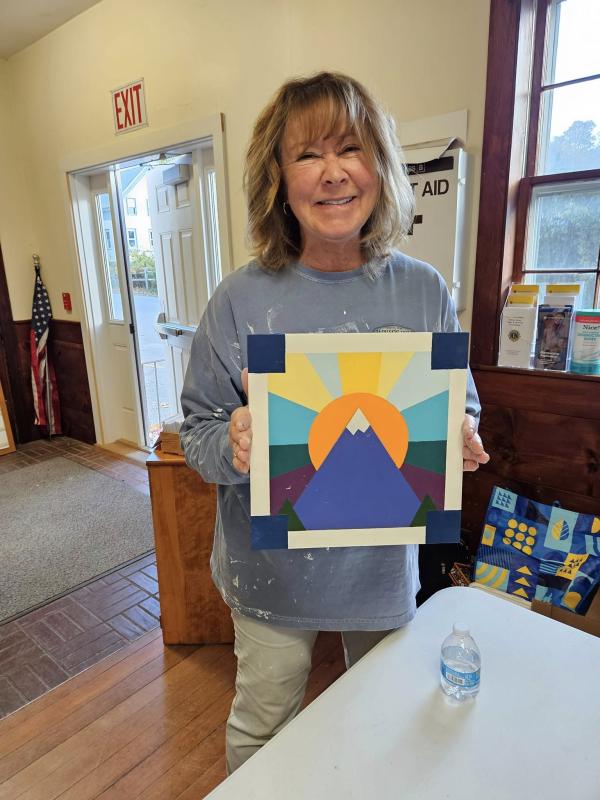 Lucy-Ann Spaulding at the Oct. class. Courtesy of Saskia Reinholt Facebook page
Lucy-Ann Spaulding at the Oct. class. Courtesy of Saskia Reinholt Facebook page
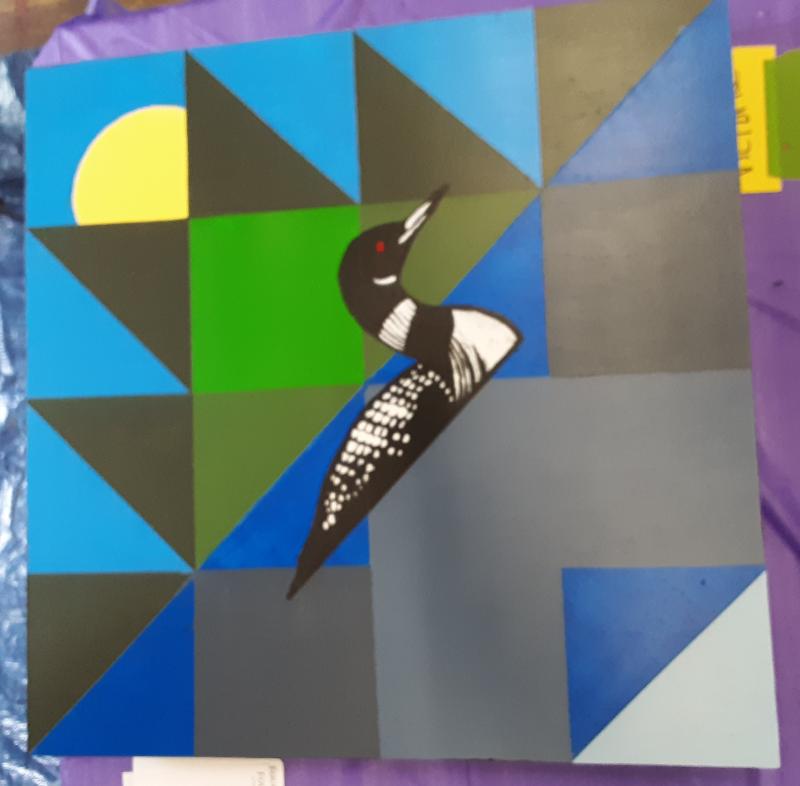 Vicki Reinecke's loon quilt. Courtesy of the artist
Vicki Reinecke's loon quilt. Courtesy of the artist
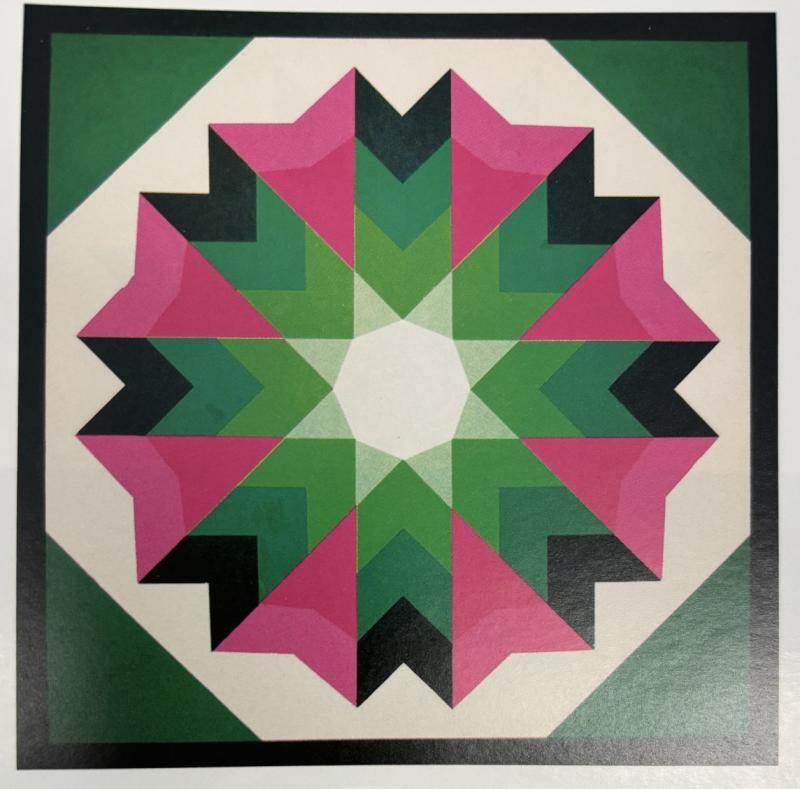 Fairy Flower pattern. From the book, "The Maine Barn Quilt Trail in Maine's High Peaks."
Fairy Flower pattern. From the book, "The Maine Barn Quilt Trail in Maine's High Peaks."
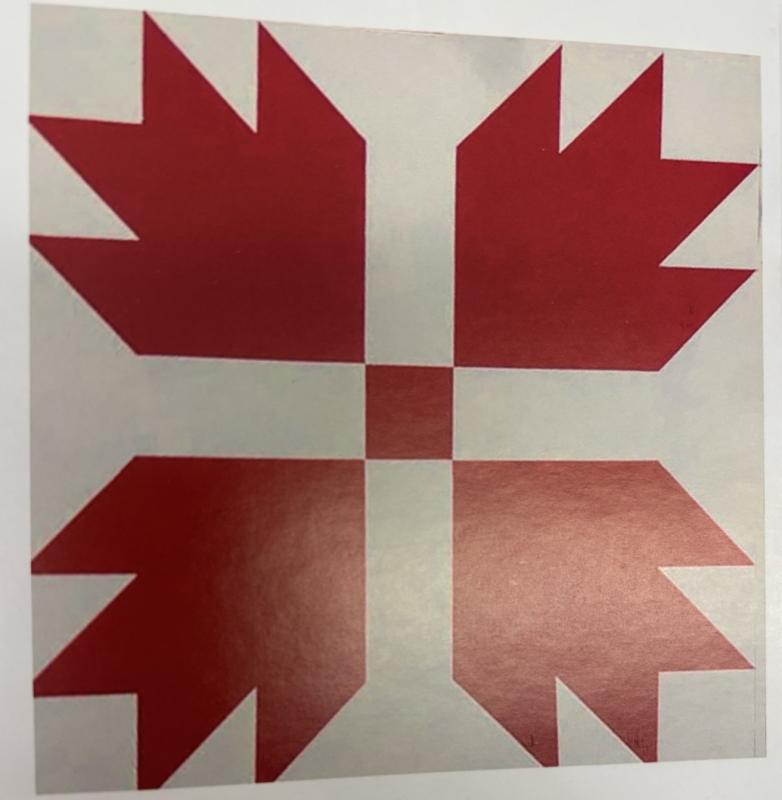 Bear Paw. From the book, "The Maine Barn Quilt Trail in Maine's High Peaks."
Bear Paw. From the book, "The Maine Barn Quilt Trail in Maine's High Peaks."
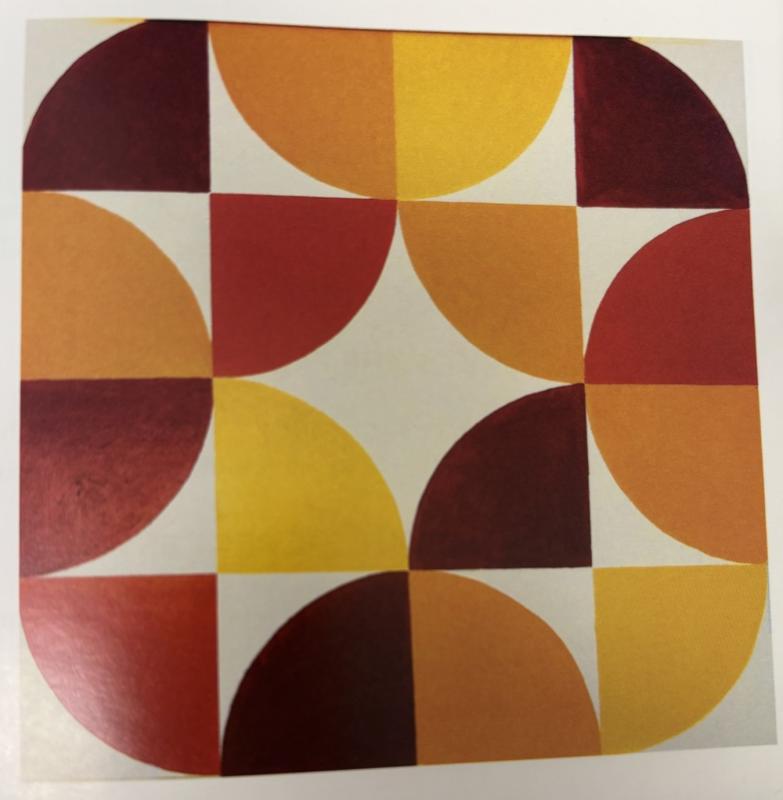 Drunkards Path. From the book, "The Maine Barn Quilt Trail in Maine's High Peaks."
Drunkards Path. From the book, "The Maine Barn Quilt Trail in Maine's High Peaks."
 Courtesy of Saskia Reinholt
Courtesy of Saskia Reinholt
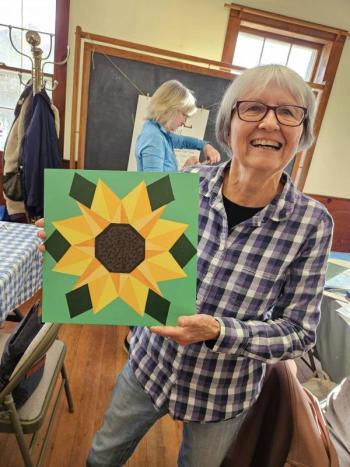 Rita Arnold and her sunflower. Courtesy of Saskia Reinholt Facebook page
Rita Arnold and her sunflower. Courtesy of Saskia Reinholt Facebook page
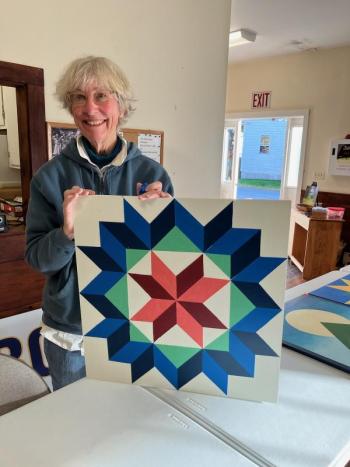 Southport artist Fran Scannell and her star square completed at the Oct. 26 quilt workshop with Saskia Reinholt. . Courtesy photo
Southport artist Fran Scannell and her star square completed at the Oct. 26 quilt workshop with Saskia Reinholt. . Courtesy photo
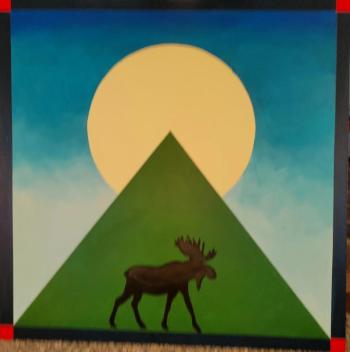 Full Moon Moose quilt by Vicki Reinecke. Courtesy image
Full Moon Moose quilt by Vicki Reinecke. Courtesy image
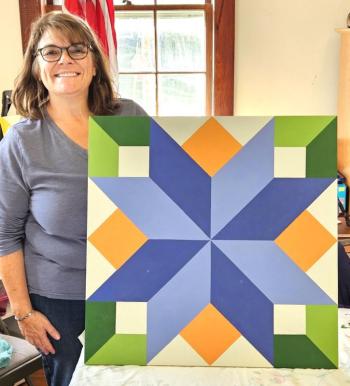 Courtesy of Saskia Reinholt
Courtesy of Saskia Reinholt
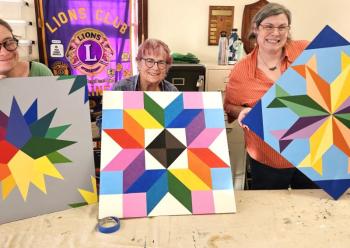 Courtesy of Saskia Reinholt
Courtesy of Saskia Reinholt
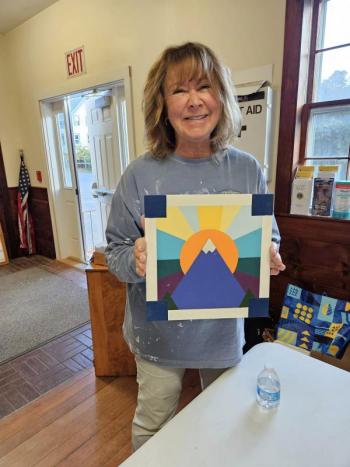 Lucy-Ann Spaulding at the Oct. class. Courtesy of Saskia Reinholt Facebook page
Lucy-Ann Spaulding at the Oct. class. Courtesy of Saskia Reinholt Facebook page
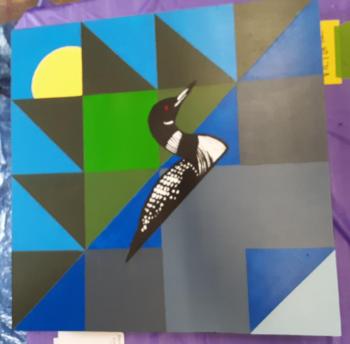 Vicki Reinecke's loon quilt. Courtesy of the artist
Vicki Reinecke's loon quilt. Courtesy of the artist
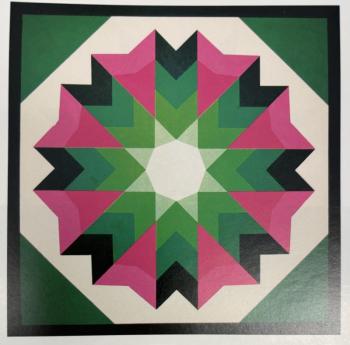 Fairy Flower pattern. From the book, "The Maine Barn Quilt Trail in Maine's High Peaks."
Fairy Flower pattern. From the book, "The Maine Barn Quilt Trail in Maine's High Peaks."
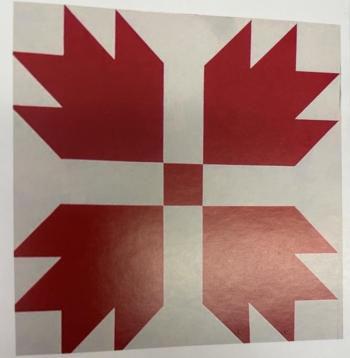 Bear Paw. From the book, "The Maine Barn Quilt Trail in Maine's High Peaks."
Bear Paw. From the book, "The Maine Barn Quilt Trail in Maine's High Peaks."
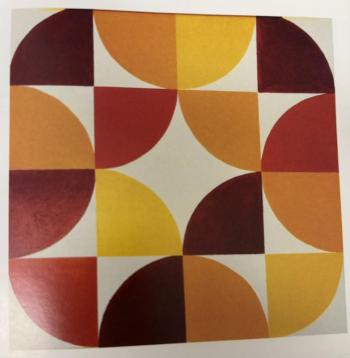 Drunkards Path. From the book, "The Maine Barn Quilt Trail in Maine's High Peaks."
Drunkards Path. From the book, "The Maine Barn Quilt Trail in Maine's High Peaks."
 Courtesy of Saskia Reinholt
Courtesy of Saskia Reinholt
The Maple Leaf, Double Wedding Ring, Grange Block, Fiddlehead, Mariner’s Compass … these designs are among the quilt designs along the Maine Barn Quilt Trail in Franklin and Somerset counties in western Maine. Primarily displayed on barns, quilt designs also adorn public buildings, businesses and schools.
The origin of a Barn Quilt Trail, taken from the book, “Legacy – The Barn Quilt Trail in Maine’s High Peaks” written by Saskia Reinholt with photos by John and Cynthia Orcutt, goes like this: In 2001, Adams County, Ohio resident Donna Sue Groves decided to honor her mother’s quilting art. Groves painted a single quilt square of the Ohio Star on board and hung it on her barn. The design was created during the Civil War in the town of Oberlin.
Groves further envisioned a “clothesline of quilts" that would honor local heritage and encourage tourism, and brought the idea to her community. Today, Groves' idea has inspired over 7,000 barn quilts that stretch across North America.
Reinholt, a multi-media artist, colorist and teacher, is the founder of the Maine Barn Quilt Trail and a founding director of High Peaks Creative Council (HPCC). The Council is a nonprofit with a board representing nonprofits. Executive directors represent the Railroad Museum and the Stanley Museum, and other heritage museums in Franklin County; there is representation of the arts community and residents.
"Essentially, we're sort of a backbone nonprofit,” said Reinholt in a phone interview, “in the sense that we're networking other cultural nonprofits in the area, so to encourage collaboration and some resource sharing there.”
In 2018, Reinholt was working as a cultural planning consultant in Houlton when she heard about a quilting guild trying to get a quilt trail up and going. After researching barn quilts, Reinholt realized this would be good for building out a public art trail and she got involved.
“The HPCC had already developed a driving loop based around our heritage and art assets,” Reinholt said. “So (a barn quilt trail) was a way to add public art to an existing cultural asset map to increase the arts. And by having the kids paint them, you’d really get a lot of buy-in from the community — and the families connect. When you work in the schools, you really connect yourself to a lot of people you would never meet otherwise.”
Barn quilts are painted on exterior grade signboard, the edges of which are sealed with wood filler and then primed. Designs are done in exterior paints and, after drying, are varnished three to four times to protect them from UV rays. Reinholt said, through this process the barn quilts have a lifespan of 30 to 50 years.
Since 2019, here in Maine, well over 1,000 community members, including 600 schoolchildren, have participated in making quilts to be included in the Maine Barn Quilt Trail. Some quilt designs date back to the 1700s.
Fast forwarding to the 19th century, the Double Wedding Ring pattern was a popular choice in the 1920s. Couples receiving one as a gift indicated the marriage was a blessed union. The traditional pattern titled Bear Claw (an image with four bear paws and claws pointing outward), is of historical significance. Reinholt noted in her book, this pattern was used in the Underground Railroad to help guide slaves to safety by suggesting they follow the paw prints of bears to safety.
The Drunkards Path design's origins trace back to Ancient Egypt, Rome and England. The design is composed of zig zagging curved pieces that suggest the staggering gait of an inebriated person on their way home. During the Temperance Movement in the U.S., some believed displaying the Drunkard's Path, made in blue and white, was a means to promote the aboliton of alcohol. In the book, the colors, on a white background, are red, orange, yellow and brown and displayed on the Lakewood Golf Course maintenance building.
Other patterns are whimsical, such as the Fairy Flower at Toothaker Farm in Phillips. The pattern, in shades of green, rose-pink, white and black, commemorate the farm’s annual “Wonderland Festival!” In Wilton, Violet Bloom celebrates the color spectrum of violet flowers using paint, or material, in shades of pink, purple and lilac.
In addition to Reinholt's work mural-making with students, Reinholt also teaches adult workshops. Her first in the Midcoast was held in East Boothbay at the fire station Oct. 26, invited by Vicki Reinecke of West Boothbay Harbor.
The two women met through mutual friends in Phillips where Reinecke and late husband Leigh built a log cabin. Reinecke said she’s seen many of the quilts over the years in Kingfield, Phillips and Farmington. And then, last May, she took a class in Phillips hosted by local quilt shop Dark Star Fabrics, creating a loon now displayed, pond-facing, on her garage.
“After meeting Saskia I wanted to take her class, given her involvement in education and getting these gorgeous pieces of art up on beautiful old barns,” Reinecke said. “I asked if she would be willing to travel outside western Maine to teach a class and she agreed. We filled the room! Everyone had a wonderful time. I am not artistic, but think my quilt came out pretty well. I had her help me with the Moose Barn Quilt (made in the October class) — which I will take to my cabin in the spring.”
East Boothbay resident and fiber artist Lucy-Ann Spaulding hosted Reinholt and her assistant at her home and attended the class. The classes begin promptly at 9 a.m. and include a slide show on the history of barn paintings, a lesson on color theory/color schemes, and the process. All materials are included.
Southport resident and artist Fran Scannell attended the May workshop with Reinecke. “Since it combines two of my interests —quilting and painting, I was all in," Scannell said. “It's a fun project for most any age and skill level.”
Reinecke introduced her friend Rita Arnold, also of West Boothbay, to the art form by showing Arnold her loon quilt and Reinholt’s book on barn quilt trails. Arnold found a pattern, among those included online for class participants, but wanted to modify it a bit.
“Saskia encouraged me to practice drawing what I might want before the class,” Arnold said. “I used a compass and angle ruler to come up with a design, using an octagonal center and triangular petals. I wanted to do sunflowers because (my husband) Gary had planted them at his parents' house and they were blooming the fall we were married there. We still grow them in our garden every year. The time flew by and the resulting quilts were beautiful.”
Arnold is adhering to the recommendation of letting the paint cure for up to 30 days before beginning the varnishing. The plan is to mount the quilt on their garage for year-round sunflowers this spring.
Part of the draw to this art form, even among people who are not ordinarily artistic, is the meaning behind designs. Reinholt has designs on her website that are achievable in a six hour class; and information about the Maine Barn Quilt Trail, and mural making with students. The site is www.saskiareinholt.com/barn-quilts
“Because it's a very historical type of project, and so individualized, you can really express yourself in these quilts, and they don't always have to be representational of a historic building,” Reinholt said. “A lot of people walk in scared, but they walk out feeling empowered.
“I encourage people to find an old quilt that a family member made if you're looking for inspiration, it's a great way to tie that piece you're making to something that someone made years ago. You know, build out those meaningful connections; it’s a really interesting part of the project.”












